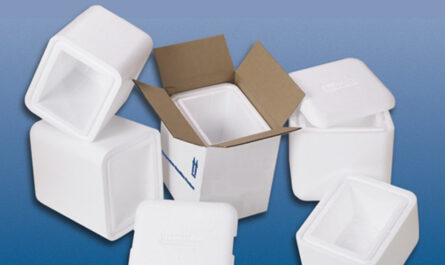Blister packaging is a term used to describe packaging that consists of a formed plastic film placed over a backing, usually paperboard or cardboard. The plastic film forms a bubble or “blister” which holds the product securely in place. A paper or cardboard interlayer is then fused to the back of the plastic film to form the complete package. This type of packaging protects products against damage, contamination, and theft while allowing consumers to see the product and any printed information through the clear plastic film.
Benefits of Blister Packaging
It offers several advantages compared to other packaging types:
Product Visibility and Marketing Opportunities
One of the biggest benefits is that it allows customers to see the product clearly through the plastic without having to open the package first. This helps with marketing by letting buyers view key Blister Packaging and features before purchase. Important information like usage instructions, branding, and warnings are also easily visible.
Protection from Damage and Contamination
The plastic film forms a rigid, rigid dome that protects the enclosed product from dents, scratches, and breakage that can occur during shipping and handling. It also prevents dirt, moisture, and other contaminants from coming into contact with the product inside prior to opening. This ensures the consumer receives the item in like-new condition.
Secure Packaging and Easy Opening
Blister packaging securely contains and displays the product while allowing for easy access. Peel-away backing paper or specially scored plastic film allows buyers to access the contents easily without damaging the product inside. Complex shapes and small delicate parts are particularly well-suited for this type of packaging.
Improved Product Lifespan
The airtight, tamper-evident seal of blister packs helps preserve products longer by preventing exposure to air, light, and other environmental factors that can degrade medicines, vitamins, batteries and other moisture-sensitive or volatile goods. This translates to extended freshness and potency for consumers.
Cost Effectiveness
While setup costs may be higher than some alternatives, blister packaging production tends to have lower material and labor expenses once tooling is complete. Automated production lines also provide excellent economies of scale. Overall the format delivers value through protective containment at moderate cost.
Applications
Given these advantages, it is used across many industries to securely package a wide range of products, including:
Consumer Goods Packaging
Everyday consumer items like toys, pens, crayons, buttons, and jewelry are commonly found in small clear plastic blister packs. These allow full product visibility while protecting delicate components like moving parts. Larger consumer electronics, sporting goods, and hobby supplies also employ custom-shaped blisters.
Healthcare and Pharmaceuticals
The Blister Packaging are the preferable choice for packaging pills, capsules, contact lenses, diagnostic kits, and other medical supplies that require a sterile, airtight barrier. Domed wells within the plastic sheet provide easy access while maintaining product and dosage integrity.
Food Packaging
Though less common than other formats, some ready-to-eat and perishable foods employ blister packaging for items with a short shelf life like slices of cheese, cooked meats, or bread products. The plastic film creates an oxygen and moisture barrier to extend freshness.
Industrial and Machinery Parts
Automotive, aerospace, electronics and other assembly industries often use specialized blister packs to organize, protect, and dispense small components or hardware during manufacturing and inventory storage. Custom forms ensure proper organization and orientation.
Types of Blister Packaging
Different manufacturing methods allow blister packs to be produced in various configurations to meet the needs of specific products and applications. Common variants include:
– Clamshells: Consist of two pre-formed clear plastic shells that are fused together around the product edges, most often used for larger flat items.
– Blister cards: Integrate individual blister “pockets” into a continuous plastic sheet connected to a paperboard backer for easier handling and shipping of multiple small items.
– Skin packs: Very tight-fitting clear plastic adhered directly to an item’s contours without separation for a minimized package size.
– Triple blisters: Stack three attached blisters vertically to house prescription drug tablets or capsules in specified daily dose configurations.
– Custom/complex shapes: Precision thermoforming creates contoured plastic shapes to securely fit oddly sized, delicate, or multiple component products.
As an established and widely proven packaging solution, blister packs will continue gaining popularity across new markets that value product protection, visibility, and convenience. Advancing production technologies also enable even more sophisticated designs tailored for 21st century goods. Overall, the format delivers safety, marketing advantages and sustainability that keep blister packaging relevant as consumer preferences and global commerce evolve.
*Note:
1. Source: Coherent Market Insights, Public sources, Desk research
2. We have leveraged AI tools to mine information and compile it



